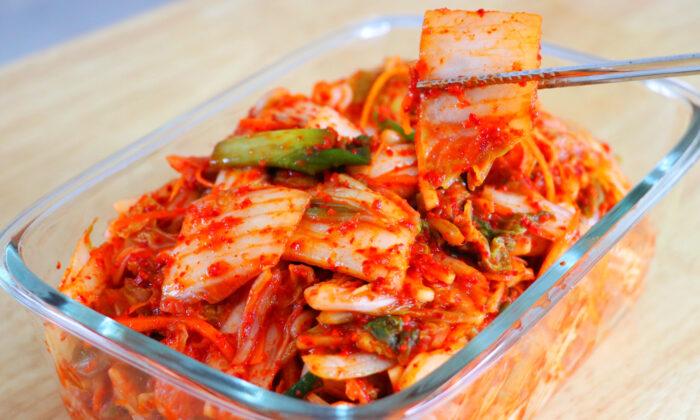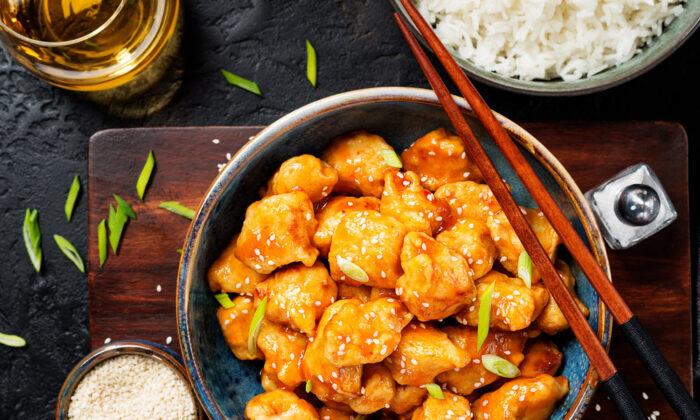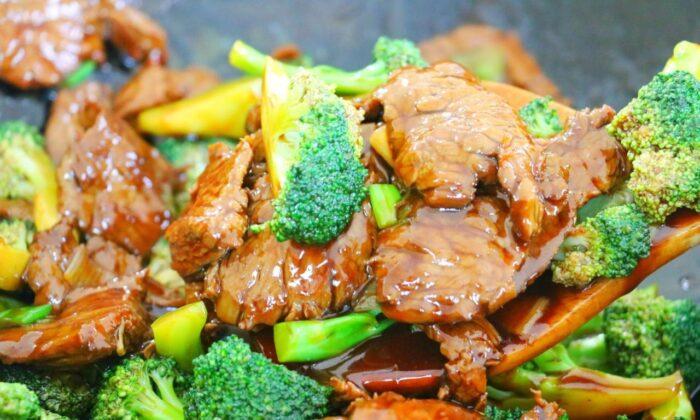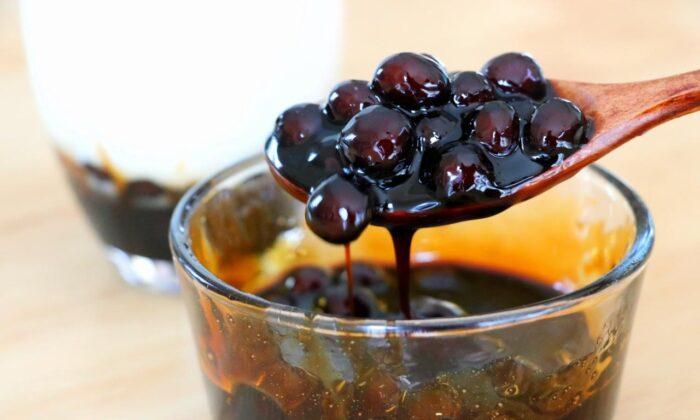When I was a kid, my parents took me to a small Sichuan restaurant in the neighborhood with some of their friends. One of them ordered a dish called “shui zhu niu rou,” which literally translates to “water-boiled beef.”
“How could he order something so bland in a Sichuan restaurant?” I wondered.
Ten minutes later, the waiter set a dish down on the table. “Here’s the boiled beef,” he announced. My eyes nearly popped out.
It was indeed a bowl of boiled beef, served on a bed of vegetables—but it all sat in a fiery red broth, surrounded by what I was sure must have been a hundred pieces of minced red chili peppers. The slices of meat were meltingly tender, shot through with Sichuan cuisine’s signature mala, or numbing and spicy flavor.
Sichuan boiled beef, I now know, is a quintessential Sichuan dish. And “shui zhu,” or “water-boiled,” is actually a common Sichuan cooking method, wherein meat or fish is poached until just tender in a hot and spicy broth, usually consisting of dried red chili peppers, numbing Sichuan peppercorns, Pixian doubanjiang (a salty, spicy paste made from fermented broad beans from the town of Pixian in Sichuan province), and other seasonings and aromatics.
Sichuan people say that “dao kou la jiao” is the soul of Sichuan boiled beef. Put simply, dao kou la jiao is a mixture of dried red chilis and Sichuan peppercorns, fried in oil to let their flavors bloom. The chilis then are chopped into small pieces or flakes, and the peppercorns into a coarse powder. Sichuan cooks use only a Chinese chef’s knife for the task; if you used a food processor, you would lose the proper textures.
There’s also a fascinating legend regarding Sichuan boiled beef, set during the Northern Song Dynasty in Zigong city of Sichuan province, which then was known as the salt capital of China.
Back then, people used cattle to transport salt throughout the country. The journeys were very labor intensive, so naturally, both the workers and the cattle quickly became exhausted. To have sufficient energy to continue their work, the workers slaughtered the cattle once they became incapable of traveling any further, then cut their meat into thin slices, boiled them in water, and added salt, Sichuan peppercorns, chiles, and other seasonings.
As time went by, this survival dish, born out of necessity, became the renowned boiled beef of Sichuan province.
Sichuan Boiled Beef
Prep Time: 20 minutesCook Time: 20 minutes
Serves 2
For the meat marinade:
- 1 pound beef tenderloin, cut against the grain into 1/4-inch-thick slices
- 1 egg white
- Pinch of salt
- Pinch of white pepper
- 1 teaspoon cornstarch and 2 tablespoons water, mixed into a slurry
- 3 tablespoons vegetable oil
- 1/2 cup dried red chili peppers
- 1 tablespoon Sichuan peppercorns
- 1 tablespoon vegetable oil
- 2 cups napa cabbage, cut into 2-inch pieces
- 1 cup Chinese celery, cut into 2-inch pieces
- Pinch of salt
- 3 slices ginger
- 3 garlic cloves
- 2 scallions, white parts only
- 2 tablespoons Pixian doubanjiang (Pixian broad bean paste with red chili oil)
- 3 cups beef stock
- 2 tablespoons soy sauce
- Pinch of salt
- Pinch of white pepper
- 1 teaspoon Sichuan peppercorn oil
- 2 tablespoons cornstarch plus 4 tablespoons water, mixed into a slurry
- 6 tablespoons vegetable oil
- Cilantro for garnish
Make the dao kou la jiao: In a pan, add 3 tablespoons of vegetable oil, then the dried red chili peppers and Sichuan peppercorns. Cook over low heat until aromatic, about three minutes. Remove from heat and drain, reserving the chili oil.
Let the chilis and peppercorns cool, then chop the chilis into about 1/2-inch pieces, and chop the peppercorns into a coarse powder. Set aside.
Prepare the vegetables: Add another tablespoon of vegetable oil to the pan, then add the napa cabbage and the Chinese celery. Fry over medium-high heat until softened, about two minutes. Season with a pinch of salt. Transfer to a large bowl.
Make the broth: In the same pan, add the reserved chili oil, along with the ginger, garlic, and white parts of the scallions and cook over high heat until fragrant, about 2 minutes. Add the Sichuan Pixian doubanjiang and cook until fragrant, another 2 minutes. Pour in the beef stock, then add the soy sauce, salt, white pepper, and peppercorn oil. Turn the heat to high and bring to a boil.
Turn the heat to low, then gently swish in the marinated beef slices, one by one. Turn the heat to high and boil until cooked through, about three minutes. Pour in the cornstarch slurry to thicken the broth. Transfer to the large bowl and top with the chopped dried red chilis and Sichuan peppercorns.
In a small pan, heat the final 6 tablespoons of vegetable oil on high heat until smoking hot, about 2 minutes. Pour the oil over the chilis and peppercorns. Be very careful, as the oil might splash. Garnish with cilantro and serve.
Recipe by CiCi Li.
CiCi Li is the producer and presenter of “CiCi’s Food Paradise” on NTD. Join her in discovering the world of Asian home cooking at CiCiLi.tv






Friends Read Free